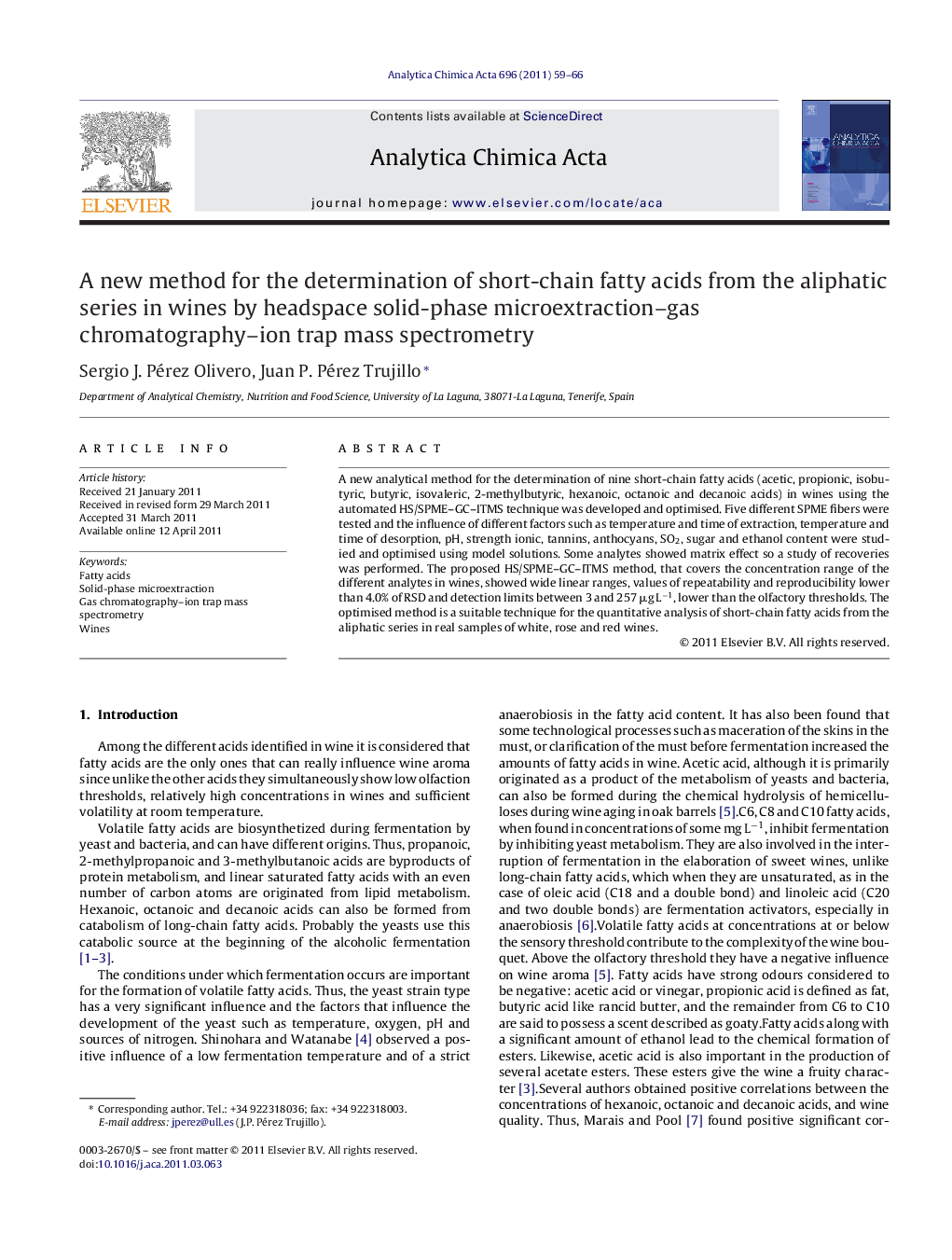| کد مقاله | کد نشریه | سال انتشار | مقاله انگلیسی | نسخه تمام متن |
|---|---|---|---|---|
| 1166802 | 1491131 | 2011 | 8 صفحه PDF | دانلود رایگان |

A new analytical method for the determination of nine short-chain fatty acids (acetic, propionic, isobutyric, butyric, isovaleric, 2-methylbutyric, hexanoic, octanoic and decanoic acids) in wines using the automated HS/SPME–GC–ITMS technique was developed and optimised. Five different SPME fibers were tested and the influence of different factors such as temperature and time of extraction, temperature and time of desorption, pH, strength ionic, tannins, anthocyans, SO2, sugar and ethanol content were studied and optimised using model solutions. Some analytes showed matrix effect so a study of recoveries was performed. The proposed HS/SPME–GC–ITMS method, that covers the concentration range of the different analytes in wines, showed wide linear ranges, values of repeatability and reproducibility lower than 4.0% of RSD and detection limits between 3 and 257 μg L−1, lower than the olfactory thresholds. The optimised method is a suitable technique for the quantitative analysis of short-chain fatty acids from the aliphatic series in real samples of white, rose and red wines.
Figure optionsDownload as PowerPoint slideHighlights
► A method for determination of fatty acids in wines is developed for the first time.
► This method is faster as it does not require a previous derivatization process.
► The detection limits are below olfaction thresholds of the analytes in wines.
► The variability of the % of alcohol is solved using a suitable internal standard.
► The matrix effect of five analytes is solved by use of the recoveries.
Journal: Analytica Chimica Acta - Volume 696, Issues 1–2, 24 June 2011, Pages 59–66